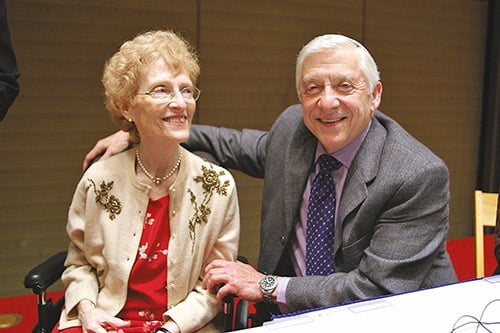
January 27, 1945. Auschwitz-Birkenau is liberated by Soviet forces still engaged in fighting the retreating Germans. Chaos rules and survivors are scattered. Some are forced into death marches. Many are too sick to move but long to search for surviving family. The few stronger ones disperse quickly.
Renate, a seven-year-old survivor, lies on the freezing ground. Mrs. Mucha, a local resident, sees Renate there, takes her home to nurse her, and renames her Irenka. She raises her as a Catholic. Irenka attends church regularly and says the rosary.
At approximately the same time, Rene, a seven-year-old boy, is also liberated by the Soviets. Once he recovers, he departs the camp with Ludovit Feld, an adult Jewish dwarf and accomplished artist. Feld brings the boy to Kosice, Czechoslovakia, his hometown; Rene cannot identify his own birthplace or any surviving family. In Kosice, which prewar was home to one of Slovakia’s largest Jewish communities, Rene is placed in a Catholic orphanage. Dr. Kalina and his wife, Jews, take an interest in Rene, but for political reasons, the Kalinas must flee Kosice. Dr. Kalina entrusts his sister Edith Mann with keeping watch over Rene.
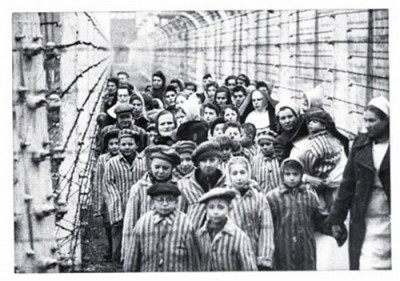 Most child survivors’ stories of displacement have common threads. All are remarkable. However, what distinguishes this story from others is that the boy and girl, Rene and Renate Guttmann, are twins, “Mengele twins,” an even rarer phenomenon.
Most child survivors’ stories of displacement have common threads. All are remarkable. However, what distinguishes this story from others is that the boy and girl, Rene and Renate Guttmann, are twins, “Mengele twins,” an even rarer phenomenon.
Even more unlikely is the confluence of events and series of “coincidences” that lead to their discovery, placement, rescue, and adoptions, through which they are reunited. If we can backtrack to the Guttmanns’ life before the Nazis and follow their well-trod wartime path through hell, then how much more awe-inspiring it is to see how their saga plays out.
The Guttmann Family– as One, and Then Fragmented
The Guttmann family from Dresden—Herbert, and Ita, his wife, marry in the mid-1930s. Herbert, a Mischling with a Jewish father, and Ita are subject to Reich laws. The couple crosses the German border into Czechoslovakia, where their twins Renate and Rene are born in Teplice-Sanov on December 21, 1937. The family resides in Prague, where Herbert is a businessman and Ita is an accountant. In 1941, Herbert is arrested, sent to Auschwitz I, and although apolitical, is interned with political prisoners. He is executed on December 18, 1941. Ita, the children, and Ita’s parents are deported to Theresienstadt (Terezin) on September 8, 1942. They remain together until December 15, 1943, when Ita, Rene, and Renata are transferred to Auschwitz. Ita’s parents are killed.
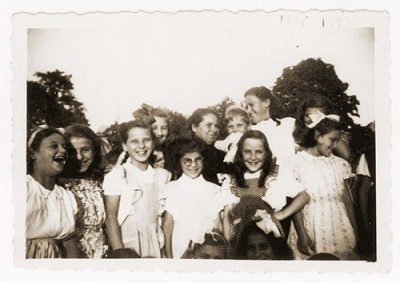 In Auschwitz, Ita and the twins remain in the Auschwitz “family camp,” a “show” camp to impress international organizations about prisoners’ treatment. There is no requirement to have heads shaved or wear striped uniforms. The temporary protection the Guttmanns are afforded within Auschwitz is withdrawn, when, between July 10-12, 1944, the camp is emptied, most inhabitants gassed, and Rene and Renate are separated from Ita. The twins recall their mother’s screams and a Nazi guard striking her. They never see her again. They are then separated into gender-based barracks.
In Auschwitz, Ita and the twins remain in the Auschwitz “family camp,” a “show” camp to impress international organizations about prisoners’ treatment. There is no requirement to have heads shaved or wear striped uniforms. The temporary protection the Guttmanns are afforded within Auschwitz is withdrawn, when, between July 10-12, 1944, the camp is emptied, most inhabitants gassed, and Rene and Renate are separated from Ita. The twins recall their mother’s screams and a Nazi guard striking her. They never see her again. They are then separated into gender-based barracks.
Seven Months as Mengele Twins
Between mid-July 1944 until liberation, the twins, selected by Mengele for his infamous experiments, are part of a nefarious plan. Renate (Irene Hizme) comments, “We were hand picked to be human guinea pigs in Mengele’s obsessive search for perfecting and reproducing a master Aryan race…” (Angelone, 2004). His experiments often result in sterilization, paralysis, and death for its subjects. Of the 3000 such sets of twins, only several hundred survive
Renate clearly remembers repeatedly having her blood drawn and multiple X rays. Perhaps Rene was the experiments’ “control,” but his recollections are not as vivid as his sister’s. Only once do Rene and Renata see and recognize each other during that time. The encounter leads Renate to believe that they will meet again. At liberation, each lacks proof positive of the other’s survival or each other’s destination. Sometime shortly after liberation, a Soviet photographer snaps a now-famous photo of child survivors with their forearms displaying their numbered tatoos. Rene is one of those children.
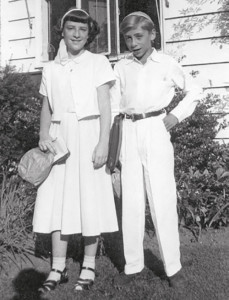
Two Postwar Rescue Missions
After the war, Rescue Children, Inc., sets out to locate and care for displaced orphans, and finds Renate at Mrs. Mucha’s home near Auschwitz. Given that she never legally adopts Irenka and therefore, has no claim to her, Rescue Children removes her and places her in a Jewish orphanage in Foublaines (AKA, Fublaines), in North Central France.
In Foublaines, Renata/Irenka becomes Irena. Rescue Children launches a fundraising campaign to continue its work, and sends Irena, then 9, and Charles Karo, another orphan, to the US as the organization’s “poster children.” There, LIFE magazine publishes a photo of them. Both children are slated to return to France when their mission is completed, but several families express interest in adopting Renate/Irenka/Irena and Charles. Ultimately, Meyer Slotkin and his wife Dina, a wealthy couple living in Far Rockaway, with an older daughter, Debbie, do adopt Irena. The Slotkins, modern Orthodox Jews, provide Irena, now Irene, with a loving, stable home, material needs, and a Jewish education.
Irene, burdened by memories of upheaval, the loss of family, and the many atrocities seen and experienced by her, bottles her emotions about the Shoah. She is often mute. Eventually, she tells the Slotkins that she has a twin brother.
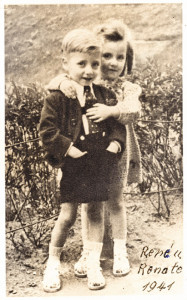 The Slotkins resolve to find Rene, bring him to Far Rockaway, adopt him, and give him a fair shot at a normal life with his sister. To this end, they commit enormous resources and hire a private investigator named Enright to comb Europe in search of him. In a separate, fortuitous “coincidence,” Dr. Kalina, Rene’s former guardian angel in Kosice, who has since immigrated to Israel, sees Irene’s photo in LIFE and reaches out to American authorities, who alert the Slotkins. Enright travels to Czechoslovakia to bring Rene to America.
The Slotkins resolve to find Rene, bring him to Far Rockaway, adopt him, and give him a fair shot at a normal life with his sister. To this end, they commit enormous resources and hire a private investigator named Enright to comb Europe in search of him. In a separate, fortuitous “coincidence,” Dr. Kalina, Rene’s former guardian angel in Kosice, who has since immigrated to Israel, sees Irene’s photo in LIFE and reaches out to American authorities, who alert the Slotkins. Enright travels to Czechoslovakia to bring Rene to America.
The Slotkins face major immigration obstacles in bringing Rene to America. These hurdles are clearly compounded not only by strict US quotas but also by the Cold War, given that Czechoslovakia is a Soviet satellite state. Meyer navigates tightly guarded political and administrative channels to gain access to President Truman, whom he eventually meets. He receives permission for Rene to immigrate and on March 29, 1950, Rene arrives in the US.
New Parents, New Names, New Lives, and Looking Forward Only
Rene, by then 12, is reunited with his sister Irene. He learns English, attends Hebrew Institute of Long Island (HILI), and together with Irene, adapts to their new home, new parents, and religious observances. After so many traumas and upheavals, Rene and Irene, just like other pre-teens and teens, want to blend in with those around them. They graduate high school, attend college, get jobs, and marry. Although both eventually divorce their first spouses, they have long and successful second marriages. Irene Hizme has two daughters, Lori and Robin. Rene has two sons, Zevi and David, and a daughter, Corie, from his first marriage. His younger daughter, Mia, is from his second marriage. Irene and Rene have the joy of seeing their grandchildren thrive.
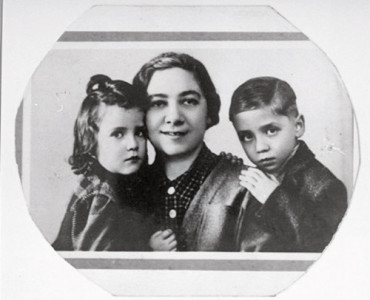 Professionally, Rene, who has facility with math, works for decades applying his skills for a box company. Afterwards, he uses those skills to teach and tutor. An athletically inclined man, he also coaches sports and teaches physical education at yeshivot. He loves his “normal” life.
Professionally, Rene, who has facility with math, works for decades applying his skills for a box company. Afterwards, he uses those skills to teach and tutor. An athletically inclined man, he also coaches sports and teaches physical education at yeshivot. He loves his “normal” life.
Irene is artistic. She is an accomplished calligrapher. She grapples with MS, appears frailer than her brother, but is active and spirited. In the late 1980s and 1990s, her symptoms become more acute, and from the mid-1990s on, she is almost always in a wheelchair.
Confronting the Past with Each Other and Helping Others to Grasp the Lessons of the Holocaust
One can attempt to understand how difficult it is for these twins—children who prematurely have had to face the worst of the adult world—to discuss their experiences in the Holocaust. Even the most empathetic person can’t possibly fathom the subjective horror each survivor relives again and again. In the 1950s, Rene’s son Zevi reiterates, most people do not yet discuss the Holocaust. The emphasis is on moving forward and starting new lives.
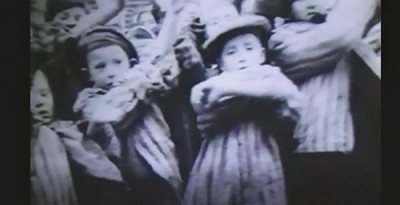 It is not surprising, then, that Rene and Irene never once discuss the Shoah with each other until 1985. Forty years after liberation, they are invited by the Israeli government to participate in a mock trial of Mengele, held by the judiciary. All known Mengele twins are invited to testify, in the hope that Mengele is still alive and can be brought to justice. Mengele’s death by drowning is later established.
It is not surprising, then, that Rene and Irene never once discuss the Shoah with each other until 1985. Forty years after liberation, they are invited by the Israeli government to participate in a mock trial of Mengele, held by the judiciary. All known Mengele twins are invited to testify, in the hope that Mengele is still alive and can be brought to justice. Mengele’s death by drowning is later established.
The mock trial is a turning point in the twins’ lives. From then on, and more so in the 1990s, they begin to share their Holocaust experiences. Irene is the more proactive speaker of the two. Renee talks about his experience if the topic arises, and if relevant, and only then, he shows the tatoo on his arm.
The Slotkins first speak about their experiences “on the record” for The Shoah Project. Unfortunately, he and Irene, dissatisfied with the interviews, do not agree to posting them online. In 1995 and 1998, their families accompany them to their United States Holocaust Memorial Museum (USHMM) interviews, and their stories are available online. It’s not clear why the interviews are repeated.
In 2014, the twins participate in the Names, Not Numbers project at Moriah School, where David, Rene’s son, teaches. In 2019, Rene and Irene are interviewed for a documentary by the Canadian History Channel, but their segment never airs. These are the twins’ final interviews.
Where was G-d in the Holocaust?
Survivors’ beliefs, or lack of belief in G-d, run the gamut. Their experiences are so subjective and deeply embedded that it is impossible to contest their perspectives. Who is to judge another’s reaction to the Shoah’s horrors?
Zevi Slotkin (2023) describes his father’s “simple acceptance that G-d exists and has a hand in things”. On video (Katz, 2016), Rene rolls up his sleeve and identifies the gematria (numerical sum) of his tatoo as 23, representing Psalm 23, which he interprets as “G-d is with me.” Zevi adds, “Each story is incredibly unique and miraculous. Rene’s is one of many…”
Irene Hizme departs this world on the 29th of May 2019, as does Rene on the 9th of July 2022. These dates mark the beginning of a new journey for two remarkable souls. Their inhumane treatment at the hands of barbarians neither embitters nor otherwise defeats them. May their memory be for a blessing.
NOTE: Most of the research data for this article is derived from an extended interview with Zevi Slotkin, son of Rene Slotkin (1/8/23). I am grateful for his detailed portrait of the Slotkin twins’ lives. I also thank Mia Lelonek, Rene’s daughter, for connecting me with Rene and for supplementary information.
Additional Related Sources:
Rene and I (2004): (Dir. Gina Angelone). https://www.youtube.com/watch?v=WvWxeqwsPUk
Eitan Katz: Forever Grateful: https://www.youtube.com/watch?v=K0fAkL6xmNw
https://encyclopedia.ushmm.org/content/en/id-card/rene-guttmann
https://candlesholocaustmuseum.org/file_download/inline/584d1558-625f-4caf-b1a1-2b323b9b8b2e
Rachel Kovacs is an Adjunct Associate Professor of communication at CUNY, a PR professional, theater reviewer for offoffonline.com—and a Judaics teacher. She trained in performance at Brandeis and Manchester Universities, Sharon Playhouse, and the American Academy of Dramatic Arts. She can be reached at mediahappenings@gmail.com.








